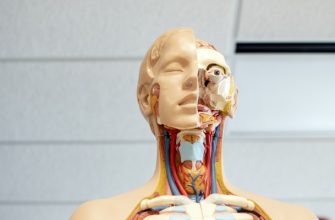The Importance of Oxygen in Fitness and Exercise
Oxygen plays a vital role in fitness and exercise, serving as a key component for optimal physical performance and overall health. During physical activities, the body requires an adequate supply of oxygen to fuel muscles, enabling them to function effectively. This essential gas supports aerobic metabolism, which is crucial for endurance training and prolonged workouts.
In the absence of sufficient oxygen, the body resorts to anaerobic metabolism, which is less efficient and can lead to quicker fatigue. Consequently, understanding the significance of oxygen in fitness routines can help individuals tailor their workouts to enhance performance and endurance. Proper breathing techniques and exercises that promote oxygen intake can significantly elevate workout efficiency.
- Enhancement of Endurance: Increased oxygen availability helps sustain energy levels during prolonged physical activities, allowing individuals to train longer and harder.
- Muscle Recovery: Adequate oxygen delivery to muscles aids in the recovery process, reducing soreness and promoting faster healing after intense workouts.
- Improved Cardiovascular Health: Regular aerobic exercises that emphasize oxygen intake strengthen the heart and lungs, improving overall cardiovascular fitness.
- Weight Management: Efficient oxygen usage during workouts enhances fat oxidation, contributing to effective weight loss and management.
- Mental Clarity: Oxygen is not only vital for physical performance but also for cognitive function, helping maintain focus and mental sharpness during exercise.
Incorporating oxygen-rich activities, such as running, swimming, or cycling, can significantly impact fitness levels. Additionally, practices like yoga and Pilates enhance breathing techniques, ensuring that the body receives maximum oxygen during workouts. A well-structured fitness program that prioritizes oxygen intake can lead to remarkable improvements in performance, health, and overall well-being.
How Oxygen Fuels Your Workout Performance
Кислород играет ключевую роль в улучшении физической работоспособности и поддержании общей формы. Он необходим для эффективного обмена веществ, что позволяет организму вырабатывать энергию, необходимую для выполнения физических упражнений. В процессе аэробной активности, такой как бег или плавание, кислород поступает в легкие, а затем переносится в кровоток, что способствует насыщению мышц.
Когда уровень кислорода в организме оптимален, улучшается выносливость и сокращается время восстановления после тренировок. Это происходит благодаря тому, что кислород помогает выводить молочную кислоту, которая накапливается в мышцах во время интенсивной физической нагрузки.
- Кислород способствует повышению уровня энергии.
- Обеспечивает эффективное сжигание жиров и углеводов.
- Улучшает выносливость и производительность.
- Снижает риск травм за счет ускоренного восстановления.
- Помогает поддерживать оптимальный уровень кислорода в крови.
Важно помнить, что поддержание высокого уровня кислорода в организме возможно не только через дыхание, но и с помощью правильного питания и гидратации. Употребление продуктов, богатых железом, таких как шпинат и красное мясо, помогает улучшить транспортировку кислорода к мышцам. Также стоит обратить внимание на уровень гидратации, так как недостаток жидкости может негативно сказаться на кислородном обмене.
Таким образом, кислород является основой для достижения высоких результатов в фитнесе. Понимание его роли может помочь в оптимизации тренировочного процесса и повышении общей физической активности.
Breathing Techniques to Enhance Oxygen Intake
Breathing techniques play a crucial role in enhancing oxygen intake, significantly impacting fitness and overall health. Proper oxygen consumption is essential for optimizing physical performance and recovery. By mastering specific breathing exercises, individuals can improve lung capacity, boost endurance, and enhance metabolic processes.
- Diaphragmatic Breathing: This technique involves deep breathing using the diaphragm, which allows for maximum oxygen exchange. Inhale deeply through the nose, allowing the abdomen to rise, and exhale slowly through the mouth.
- Pursed Lip Breathing: This method helps control breathing and increase oxygen intake. Breathe in through the nose for two counts, then exhale through pursed lips for four counts. This technique improves ventilation and reduces shortness of breath.
- Box Breathing: A structured technique that involves inhaling, holding, exhaling, and holding again for equal counts, typically four seconds each. This method calms the nervous system and enhances oxygen flow to the muscles.
- Nasal Breathing: Breathing through the nose filters and warms the air, improving oxygen absorption. This method is particularly beneficial during exercise, as it promotes a steady oxygen supply and enhances endurance.
- 4-7-8 Technique: This technique involves inhaling for four seconds, holding for seven seconds, and exhaling for eight seconds. It promotes relaxation and increases oxygen levels in the bloodstream.
Incorporating these breathing techniques into a fitness routine can lead to significant improvements in oxygen intake, energy levels, and overall physical performance. Understanding the connection between oxygen and fitness is essential for anyone looking to enhance their workout effectiveness.
The Connection Between Oxygen Levels and Endurance
Оxygen levels play a crucial role in determining physical endurance and overall fitness performance. When engaging in any form of exercise, the body requires a consistent supply of oxygen to fuel muscle activity and maintain energy levels. Low oxygen availability can lead to fatigue, decreased performance, and a lack of stamina.
During aerobic activities, such as running or cycling, the body relies heavily on oxygen to produce energy efficiently. This process, known as oxidative phosphorylation, is essential for sustaining prolonged physical exertion. Adequate oxygen levels enable athletes to perform at their best, pushing their limits and improving endurance.
- Higher oxygen levels enhance aerobic capacity, allowing for longer workout durations.
- Insufficient oxygen can lead to lactic acid buildup, resulting in muscle fatigue.
- Optimal oxygen supply supports cardiovascular health, which is vital for endurance athletes.
- Improved oxygen delivery to muscles enhances recovery rates post-exercise.
Furthermore, training at higher altitudes, where oxygen levels are lower, can stimulate the body to adapt by increasing red blood cell production. This adaptation can lead to improved oxygen transport capabilities, enhancing overall endurance during subsequent training sessions at lower altitudes.
In summary, the relationship between oxygen levels and endurance is fundamental for fitness enthusiasts. Ensuring optimal oxygen supply not only boosts performance but also aids in recovery, making it an essential factor in any fitness regimen aimed at improving endurance and overall health.
Oxygen’s Role in Muscle Recovery and Growth
Oxygen plays a crucial role in both muscle recovery and growth, making it an essential element in any fitness regimen. When engaging in physical activities, the body requires adequate oxygen to fuel muscles, enabling them to perform optimally. During exercise, muscles consume oxygen to produce energy, primarily through a process known as aerobic respiration.
Following intense workouts, oxygen aids in the recovery of muscle tissues by facilitating the removal of metabolic waste products, such as lactic acid, which can accumulate and lead to fatigue. The presence of oxygen enhances blood circulation, ensuring that essential nutrients reach the muscles, further promoting recovery and growth. This process not only alleviates soreness but also aids in the repair of micro-tears that occur in muscle fibers during exertion.
- Enhanced energy production: Oxygen is vital for the conversion of carbohydrates and fats into energy.
- Improved blood circulation: Increased oxygen levels support better nutrient delivery to muscles.
- Faster recovery: Oxygen helps in the detoxification of muscles, reducing soreness and speeding up healing.
- Muscle growth stimulation: Adequate oxygen promotes protein synthesis, essential for muscle repair and growth.
Incorporating strategies to optimize oxygen intake can significantly impact muscle performance. Techniques such as deep breathing exercises, staying hydrated, and engaging in aerobic activities can enhance oxygen availability during workouts. Additionally, ensuring proper nutrition, rich in antioxidants, helps to improve oxygen utilization within the body, further supporting muscle recovery and growth.
In summary, the role of oxygen in muscle recovery and growth cannot be overstated. By understanding and leveraging the importance of oxygen in fitness, individuals can optimize their training outcomes and achieve their fitness goals more effectively.
Maximizing Your Fitness Routine with Optimal Oxygen Use
Maximizing fitness routines is closely linked to optimal oxygen use. Oxygen plays a crucial role in energy production during physical activities, allowing muscles to perform efficiently. Understanding how to enhance oxygen consumption can lead to improved endurance and overall fitness levels.
- Incorporating aerobic exercises, such as running or cycling, can significantly increase oxygen intake. These activities enhance cardiovascular health and boost the body’s ability to utilize oxygen effectively.
- High-Intensity Interval Training (HIIT) is another effective method for maximizing oxygen use. Short bursts of intense exercise followed by rest periods can improve oxygen efficiency and enhance metabolic rate.
- Breathing techniques, such as diaphragmatic breathing, can improve lung capacity and increase the amount of oxygen available during workouts. Proper breathing allows athletes to sustain higher levels of exercise for longer periods.
- Staying hydrated is essential for maintaining optimal oxygen transport in the bloodstream. Adequate fluid intake ensures that oxygen-rich blood reaches the muscles effectively, enhancing performance.
- Nutrition also plays a vital role. Consuming foods rich in iron, such as leafy greens and lean meats, can improve hemoglobin levels, facilitating better oxygen delivery throughout the body.
In conclusion, maximizing fitness routines through optimal oxygen use involves various strategies, including the implementation of aerobic exercises, HIIT, effective breathing techniques, hydration, and a balanced diet. Focusing on these elements can significantly enhance athletic performance and overall fitness, leading to long-term health benefits.








